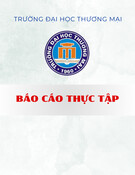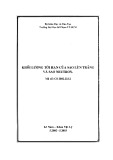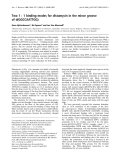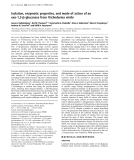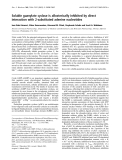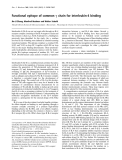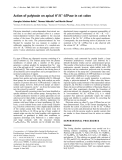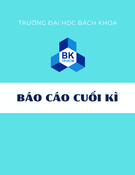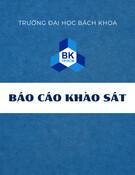
BioMed Central
Page 1 of 15
(page number not for citation purposes)
Journal of Translational Medicine
Open Access
Research
Effective transvascular delivery of nanoparticles across the
blood-brain tumor barrier into malignant glioma cells
Hemant Sarin*1,2, Ariel S Kanevsky2, Haitao Wu3, Kyle R Brimacombe4,
Steve H Fung5, Alioscka A Sousa1, Sungyoung Auh6, Colin M Wilson3,
Kamal Sharma7,8, Maria A Aronova1, Richard D Leapman1, Gary L Griffiths3
and Matthew D Hall4
Address: 1National Institute of Biomedical Imaging and Bioengineering, National Institutes of Health, Bethesda, Maryland 20892, USA,
2Diagnostic Radiology Department, Clinical Center, National Institutes of Health, Bethesda, Maryland 20892, USA, 3Imaging Probe Development
Center, National Heart, Lung, and Blood Institute, National Institutes of Health, Bethesda, Maryland 20892, USA, 4Laboratory of Cell Biology,
National Cancer Institute, National Institutes of Health, Bethesda, Maryland 20892, USA, 5Neuroradiology Department, Massachusetts General
Hospital, Boston, Massachusetts 02114, USA, 6Biostatistics, National Institute of Neurological Disorders and Stroke, National Institutes of Health,
Bethesda, Maryland 20892, USA, 7Metabolism Branch, National Cancer Institute, National Institutes of Health, Bethesda, Maryland 20892, USA
and 8Division of Biologic Drug Products, Office of Oncology Products, Center for Drug Evaluation and Research, U.S. Food & Drug
Administration, Silver Spring, Maryland 20993, USA
Email: Hemant Sarin* - sarinh@mail.nih.gov; Ariel S Kanevsky - kanevskya@mail.nih.gov; Haitao Wu - wuh3@mail.nih.gov;
Kyle R Brimacombe - brimacombek@mail.nih.gov; Steve H Fung - sfung@partners.org; Alioscka A Sousa - sousaali@mail.nih.gov;
Sungyoung Auh - auhs@mail.nih.gov; Colin M Wilson - wilsoncm@mail.nih.gov; Kamal Sharma - kamal.sharma@fda.hhs.gov;
Maria A Aronova - aronovaa@mail.nih.gov; Richard D Leapman - leapmanr@mail.nih.gov; Gary L Griffiths - griffithsgl@mail.nih.gov;
Matthew D Hall - hallma@mail.nih.gov
* Corresponding author
Abstract
Background: Effective transvascular delivery of nanoparticle-based chemotherapeutics across the
blood-brain tumor barrier of malignant gliomas remains a challenge. This is due to our limited
understanding of nanoparticle properties in relation to the physiologic size of pores within the
blood-brain tumor barrier. Polyamidoamine dendrimers are particularly small multigenerational
nanoparticles with uniform sizes within each generation. Dendrimer sizes increase by only 1 to 2
nm with each successive generation. Using functionalized polyamidoamine dendrimer generations
1 through 8, we investigated how nanoparticle size influences particle accumulation within
malignant glioma cells.
Methods: Magnetic resonance and fluorescence imaging probes were conjugated to the
dendrimer terminal amines. Functionalized dendrimers were administered intravenously to
rodents with orthotopically grown malignant gliomas. Transvascular transport and accumulation of
the nanoparticles in brain tumor tissue was measured in vivo with dynamic contrast-enhanced
magnetic resonance imaging. Localization of the nanoparticles within glioma cells was confirmed ex
vivo with fluorescence imaging.
Results: We found that the intravenously administered functionalized dendrimers less than
approximately 11.7 to 11.9 nm in diameter were able to traverse pores of the blood-brain tumor
barrier of RG-2 malignant gliomas, while larger ones could not. Of the permeable functionalized
Published: 18 December 2008
Journal of Translational Medicine 2008, 6:80 doi:10.1186/1479-5876-6-80
Received: 20 October 2008
Accepted: 18 December 2008
This article is available from: http://www.translational-medicine.com/content/6/1/80
© 2008 Sarin et al; licensee BioMed Central Ltd.
This is an Open Access article distributed under the terms of the Creative Commons Attribution License (http://creativecommons.org/licenses/by/2.0),
which permits unrestricted use, distribution, and reproduction in any medium, provided the original work is properly cited.

Journal of Translational Medicine 2008, 6:80 http://www.translational-medicine.com/content/6/1/80
Page 2 of 15
(page number not for citation purposes)
dendrimer generations, those that possessed long blood half-lives could accumulate within glioma
cells.
Conclusion: The therapeutically relevant upper limit of blood-brain tumor barrier pore size is
approximately 11.7 to 11.9 nm. Therefore, effective transvascular drug delivery into malignant
glioma cells can be accomplished by using nanoparticles that are smaller than 11.7 to 11.9 nm in
diameter and possess long blood half-lives.
Background
Progress towards the effective clinical treatment of malig-
nant gliomas has been hampered due to ineffective drug
delivery across the blood-brain tumor barrier (BBTB), in
addition to the inability to simultaneously image drug
permeation through tumor tissue [1-3]. The current para-
digm for treating malignant gliomas is the placement of
implantable 1,3-bis (2-chloroethyl)-1-nitrosourea
(BCNU, also called carmustine) wafers in the tumor resec-
tion cavity followed by administration of oral temozolo-
mide, an alkylating agent, with concurrent radiation [4-7].
BCNU, a low molecular weight nitrosourea, is able to
cross the BBTB, but is unable to accumulate within malig-
nant glioma cells at therapeutic levels due to a short blood
half-life [8]. Intra-operative placement of polymeric
wafers impregnated with BCNU along the tumor resection
cavity has resulted in improved patient outcomes, and sig-
nificantly decreased toxicity compared to that associated
with intravenous BCNU treatment [9,10]. Since this local
method of BCNU delivery circumvents the BBTB and
allows for sustained release of BCNU from the polymer,
there are higher steady-state BCNU concentrations within
the tumor resection cavity[11]. However, a major limita-
tion of this delivery method is that the placement of the
BCNU polymer wafers may only be performed at the time
of initial tumor resection [12]. Temozolomide, like
BCNU, has a low molecular weight and a short blood
half-life which limits its ability to accumulate within
malignant glioma cells [5,13].
The sizes of traditional chemotherapeutics, such as BCNU
and temozolomide, are commonly reported as particle
molecular weights since these particles are usually smaller
than 1 nm in diameter [13]. In contrast, the sizes of nan-
oparticle-based therapeutics are commonly reported as
particle diameters since these particles usually range
between 1 and 200 nm in diameter [14,15]. Particle
shapes and sizes determine how effectively particles can
be filtered by the kidneys [16-18]. Spherical nanoparticles
smaller than 5 to 6 nm and weighing less than 30 to 40 kD
are efficiently filtered by the kidneys [17]. Spherical nan-
oparticles that are larger and heavier are not efficiently fil-
tered by the kidneys; therefore, these particles possess
longer blood half-lives [19]. The BBTB of malignant glio-
mas becomes porous due to the formation of discontinu-
ities within and between endothelial cells lining the
lumens of tumor microvessels [20]. Nanoparticles smaller
than the pores within the BBTB, with long blood half-
lives, could function as effective transvascular drug deliv-
ery devices for the sustained-release of chemotherapeutics
into malignant glioma cells.
Even though fenestrations and gaps within the BBTB of
malignant gliomas allow for unimpeded passage of low
molecular weight therapeutics [21], these pores are nar-
row enough to prevent the effective transvascular passage
of most nanoparticles [22-25]. If the upper limit of the
therapeutically relevant pore size of the BBTB could be
accurately determined, then intravenously administered
nanoparticles, with long blood half-lives, could serve as
effective drug delivery vehicles across the BBTB of malig-
nant gliomas.
By performing intravital fluorescence microscopy of
xenografted human glioma microvasculature in the
mouse cranial window model, Hobbs et al. [26] observed
perivascular fluorescence 24 hours following the intrave-
nous infusion of rhodamine dye labeled liposomes of 100
nm diameters. Since then several classes of nanoparticles
have been designed to be less than 100 nm in diameter for
the purposes of effective transvascular drug delivery across
the BBTB. These classes of nanoparticles include metal-
based (i.e. iron oxide) [27], lipid-based (i.e. liposomes)
[28], and biological-based (i.e. antibodies, viruses)
[29,30].
Yet another class of nanoparticles are the polymer-based
dendrimers [2,31]. Polyamidoamine (PAMAM) dendrim-
ers [32] are multigenerational polymers with a branched
exterior consisting of surface groups that can be function-
alized with imaging [33,34], targeting [35], and therapeu-
tic agents [35,36]. PAMAM dendrimers functionalized
with low molecular weight agents remain particularly
small, typically ranging between 1.5 nm (generation 1,
G1) and 14 nm in diameter (generation 8, G8) [32,33].
Particle shapes are spherical and sizes are uniform within
a particular generation. With each successive dendrimer
generation, the number of modifiable surface groups dou-
bles while the overall diameter increases by only 1 to 2 nm
[37].

Journal of Translational Medicine 2008, 6:80 http://www.translational-medicine.com/content/6/1/80
Page 3 of 15
(page number not for citation purposes)
We hypothesized that the major reason for the ineffective-
ness of metal-based, lipid-based and biological-based
nanoparticles in traversing the BBTB of malignant gliomas
is the large size of these particles relative to the physio-
logic pore size of the BBTB. In this work, using the RG-2
malignant glioma model [38,39], we also investigated
how the transvascular transport of dendrimer nanoparti-
cles is affected by tumor volume-related differences in the
degree of BBTB breakdown.
The hyperpermeability of the BBTB of malignant gliomas
results in contrast enhancement of brain tumor tissue on
magnetic resonance imaging (MRI) scans following the
intravenous infusion of gadolinium (Gd)-diethyltri-
aminepentaacetic acid (DTPA), a low molecular weight
contrast agent [40,41]. To visualize the extravasation of
PAMAM dendrimers across the BBTB of rodent malignant
gliomas by dynamic contrast-enhanced MRI, we function-
alized the exterior of PAMAM dendrimers with Gd-DTPA.
Using dynamic contrast-enhanced MRI, we measured the
change in contrast enhancement of malignant gliomas for
up to 2 hours following the intravenous infusion of suc-
cessively higher Gd-dendrimer generations up to, and
including, Gd-G8 dendrimers. To verify that dendrimer
size, and not dendrimer generation, is the primary deter-
minant of particle blood half-life, we studied Gd-G4 den-
drimers of two different sizes. One was a lowly conjugated
Gd-G4 weighing 24.4 kD and the other was a standard
Gd-G4 weighing 39.8 kD. The Gd concentration, a surro-
gate for the amount of Gd-dendrimer within tumor tissue,
was determined by measuring the molar relaxivity of Gd-
dendrimers in vitro in combination with the change in the
blood and tissue longitudinal relaxivities (T1) before and
after Gd-dendrimer infusion [42]. Based on comparisons
of the contrast enhancement patterns of malignant glio-
mas for up to 2 hours, within a particular Gd-dendrimer
generation as well as across Gd-dendrimer generations,
we determined the physiologic upper limit of BBTB pore
size.
In addition to the in vivo dynamic contrast-enhanced MRI
experiments with Gd-dendrimers, we performed in vitro
and ex vivo fluorescence microscopy experiments using
rhodamine B labeled Gd- dendrimers to confirm that the
impediment to the cellular uptake of functionalized den-
drimers is the BBTB. The observations made in this study,
using functionalized dendrimers, are to serve as a guide
for designing nanoparticles that are effective at traversing
the pores of the blood-brain tumor barrier and accumulat-
ing within individual glioma cells.
Methods
PAMAM dendrimer functionalization and characterization
Bifunctional chelating agents and gadolinium-benzyl-
diethyltriaminepentaacetic acid (Gd-Bz-DTPA) function-
alized PAMAM dendrimers were synthesized according to
described procedures with minor modifications, as were
the corresponding rhodamine-substituted conjugates [43-
45]. Gd-dendrimers, with the exception of lowly conju-
gated Gd-G4, were prepared by using a molar reactant
ratio of 2:1 bifunctional chelate to dendrimer surface
amine groups. For lowly conjugated Gd-G4 a lower molar
reactant ratio of 1.1:1 was used to limit conjugation. The
duration of the chelation reaction for the lowly conju-
gated Gd-G4 was 24 hours as compared to the standard 48
hours for chelation of all other dendrimers. Rhodamine B
labeled Gd-dendrimers were prepared by stirring rhodam-
ine B isothiocyanate (RBITC) and PAMAM dendrimers at
a 1:9 molar ratio of RBITC to dendrimer surface amine
groups in methanol at room temperature for 12 hours.
Isothiocyanate activated DTPA was then added in excess
and reacted for an additional 48 hours. Gadolinium was
then chelated after the removal of the t-butyl protective
groups on DTPA. The percent by mass of Gd in each Gd-
dendrimer generation was determined by elemental anal-
ysis to be: Gd-G1 (15.0%), Gd-G2 (14.8%), Gd-G3
(12.9%), lowly conjugated Gd-G4 (12.3%), standard Gd-
G4 (12.0%), Gd-G5 (11.9%), Gd-G6 (11.9%), Gd-G7
(12.2%), Gd-G8 (10.2%). The Gd percent by mass for the
rhodamine B Gd-dendrimers was determined to be: rhod-
amine B Gd-G2 (9.6%), rhodamine B Gd-G5 (9.8%),
rhodamine B Gd-G8 (9.3%). Gd-G1 through Gd-G5 den-
drimer molecular weights were determined by matrix
assisted laser desorption/ionization time-of-flight
(MALDI-TOF) mass spectroscopy (Scripps Center for
Mass Spectrometry, La Jolla, CA). Gd percent by mass of
the Gd-dendrimer, in its solid form, was determined with
the inductively coupled plasma-atomic emission spectros-
copy (ICP-AES) method (Desert Analytics, Tucson, AZ).
Gd-dendrimer infusions were normalized to 100 mM
with respect to Gd, while rhodamine B Gd-dendrimer
infusions were normalized to 67 mM with respect to Gd,
in order to guarantee proper solvation.
In vitro scanning transmission electron microscopy
For in vitro transmission electron microscopy experi-
ments, a 5 l droplet of phosphate-buffer saline solution
containing a sample of Gd-dendrimers from generations
5, 6, 7 or 8 was absorbed onto a 3 nm-thick carbon sup-
port film covering the copper electron microscopy grids.
Lacey Formvar/carbon coated 300 meshcopper grids sup-
porting an ultrathin 3 nm evaporated carbon film were
glow-discharged an air pressure of 0.2 mbar to facilitate
Gd-dendrimer adsorption. After adsorption for 2 minutes,
excess Gd-dendrimer solution was blotted with filter
paper. The grids were then washed 5 times with 5 L aliq-
uots of deionized water, and left to dry in air. Annular
dark field scanning transmission electron microscope
(ADF STEM) images of the Gd-dendrimers were recorded
using a Tecnai TF30 electron microscope (FEI, Hillsboro,

Journal of Translational Medicine 2008, 6:80 http://www.translational-medicine.com/content/6/1/80
Page 4 of 15
(page number not for citation purposes)
OR, USA) equipped with a Schottky field-emission gun
and an in-column ADF detector (Fischione, Export, PA)
[46].
In vitro fluorescence experiments
For in vitro fluorescence experiments, RG-2 glioma cells
were plated on Fisher Premium coverslips (Fisher Scien-
tific, Pittsburgh, PA) and incubated in wells containing
sterile 3 ml DME supplemented with 10% FBS (Invitro-
gen, Carlsbad, CA). The RG-2 glioma colonies were
allowed to establish for 24 hours in an incubator set at
37°C and 5% CO2. Rhodamine B Gd-G2, rhodamine B
Gd-G5 or rhodamine B Gd-G8 dendrimers were added to
the medium by equivalent molar rhodamine B concentra-
tions of 7.2 M and the cells were incubated in the dark
for another 4 hours. Following incubation, cells were
washed 3 times with PBS, then 50 l DAPI-Vectashield
nuclear stain medium (Vector Laboratories, Burlingame,
CA) was placed on the coverslips for 15 minutes. Cover-
slips were then inverted and mounted on Daigger Super-
frost slides (Daigger, Vernon Hills, IL) and sealed into
place. Confocal imaging was performed on a Zeiss 510
NLO microscope (Carl Zeiss MicroImaging, Thornwood,
NY). Slides were stored in the dark while not being ana-
lyzed.
In vitro magnetic resonance imaging for calculations of
Gd-dendrimer molar relaxivity
Gd-dendrimer stock solution (20 l of 100 mM) and
rhodamine B Gd-dendrimer stock solution (30 l of 67
mM) for the particular generation, used for in vivo imag-
ing, was diluted using PBS into 200 l microfuge tubes at
0.00 mM, 0.25 mM, 0.50 mM, 0.75 mM and 1.00 mM
with respect to Gd. As an external control, Magnevist
(Bayer, Toronto, Canada), a form of Gd-DTPA, was also
diluted at the above concentrations into 200 l microfuge
tubes. The microfuge tubes were secured in level and
upright positions within a plastic container filled with
deionized ultra pure water. The container was placed in a
7 cm small animal solenoid radiofrequency coil (Philips
Research Laboratories, Hamburg, Germany) centered
within a 3.0 Tesla MRI scanner (Philips Intera; Philips
Medical Systems, Andover, MA). Gd signal intensity meas-
urements were made using a series of T1 weighted spin
echo sequences with identical TE (echo time, 10 ms) but
different TR (repetition time, 100 ms, 300 ms, 600 ms and
1200 ms). Using the measured Gd signal intensity, in
addition to the known values for TR and TE, the T1 and
equilibrium magnetization (M0) were calculated by non-
linear regression [42]. In vitro and in vivo Gd-dendrimer
molar relaxivities were assumed to be equivalent for the
purposes of this work.
Brain tumor induction and animal preparation for imaging
All animal experiments were approved by the National
Institutes of Health Clinical Center Animal Care and Use
Committee. Cryofrozen pathogen-free RG-2 glioma cells
were obtained from the American Type Culture Collection
(Rockville, MD) and cultured in sterile DME supple-
mented with 10% FBS and 2% penicillin-streptomycin in
an incubator set at 37°C and 5% CO2. The anesthesia and
route for all animal experiments was isoflurane by inhala-
tion with nose cone, 5% for induction and 1 to 2% for
maintenance. On experimental day 0, the head of anes-
thetized adult male Fischer344 rats (F344) weighing 200–
250 grams (Harlan Laboratories, Indianapolis, IN) was
secured in a stereotactic frame with ear bars (David Kopf
Instruments, Tujunga, CA). The right anterior caudate and
left posterior thalamus locations within the brain were
stereotactically inoculated with RG-2 glioma cells [47]. In
each location, either 20,000 or 100,000 glioma cells in 5
l of sterile PBS were injected over 8 minutes, using a 10
l Hamilton syringe with a 32-gauge needle. With this
approach the majority of animal brains developed one
large and one small glioma. On experimental days 11 to
12, brain imaging of re-anesthetized rats was performed
following placement of polyethylene femoral venous and
arterial cannulas (PE-50; Becton-Dickinson, Franklin
Lakes, NJ), for contrast agent infusion and blood pressure
monitoring, respectively. After venous cannula insertion,
50 l of blood was withdrawn from the venous cannula
for measurement of hematocrit.
In vivo magnetic resonance imaging of brain tumors
All magnetic resonance imaging experiments were con-
ducted with a 3.0 Tesla MRI scanner (Philips Intera) using
a 7 cm solenoid radiofrequency coil (Philips Research
Laboratories). For imaging, the animal was positioned
supine, with face, head, and neck snugly inserted into a
nose cone centered within the 7 cm small animal solenoid
radiofrequency coil. Anchored to the exterior of the nose
cone were three 200 L microfuge tubes containing 0.00
mM, 0.25 mM and 0.50 mM solutions of Magnevist to
serve as standards for measurement of MRI signal drift
over time. Fast spin echo T2 weighted anatomical scans
were performed with TR = 6000 ms and TE = 70 ms. Two
different flip angle (FA) 3-D fast field echo (3D FFE) T1
weighted scans were performed with TR = 8.1 ms and TE =
2.3 ms, for quantification of Gd concentration. The first
FFE scan was performed at a low FA of 3° without any
contrast agent on board. The second FFE scan was per-
formed with a high FA of 12°. For this scan, the dynamic
scan, each brain volume was acquired once every 20 sec-
onds, for 1 to 2 hours. During the beginning of the
dynamic scan, three to five baseline brain volumes were
acquired prior to Gd-dendrimer infusion. Gd-dendrimers
were infused at doses of 0.03, 0.06 or 0.09 mmol Gd/kg
bw depending on the experiment. Gd-dendrimer was

Journal of Translational Medicine 2008, 6:80 http://www.translational-medicine.com/content/6/1/80
Page 5 of 15
(page number not for citation purposes)
infused as a bolus over 1 minute in order to accurately
measure the contrast agent dynamics in blood during the
bolus. Following completion of the 1 or 2 hour dynamic
contrast-enhanced MRI scan, another 15 minute dynamic
contrast-enhanced MRI scan was performed during which
Magnevist was infused at a dose of 0.30 mmol Gd/kg bw
over 1 minute. Tumor regions of interest were drawn
based on the Magnevist dynamic scan data.
Dynamic contrast-enhanced MRI data analyses and
pharmacokinetic modeling
Imaging data was analyzed using the Analysis of Func-
tional NeuroImaging (AFNI; http://afni.nimh.nih.gov/)
software suite and its native file format [48]. Motion cor-
rection was performed by registering each volume of the
dynamic high FA scan to its respective low FA scan. Align-
ments were performed using Fourier interpolation. A
baseline T1 without contrast (T10) map was generated by
solving equation 1 (the steady-state for incoherent signal
after neglecting T2* effects) voxel-by-voxel for T1, at both
low and high FA's, before contrast was infused [42].
where
After determining the T10 value at each voxel, T1 map was
calculated using equations 1 and 2 for each voxel of each
dynamic image during the high FA scan after contrast
infusion [42]. Datasets were converted to Gd concentra-
tion space [42]. Whole tumor regions of interest were
drawn on the basis of the dynamic contrast enhancement
pattern of tumor tissue observed following the infusion of
Magnevist. These data were important for the drawing of
accurate whole tumor regions of interest for minimally
enhancing gliomas, especially for all malignant gliomas
within the 0.03 mmol Gd/kg bw Gd-dendrimer dose cat-
egory and those in the 0.09 mmol Gd/kg bw Gd-G8 den-
drimer dose sub-category. Normal brain regions of
interest were spherical 9 mm3 volumes in the left anterior
caudate.
The pharmacokinetic properties of Gd-G1 through lowly
conjugated Gd-G4 dendrimers were modeled using the
dynamic contrast-enhanced MRI data from the groups of
animals receiving 0.09 mmol Gd/kg bw Gd-dendrimer
infusions. The change in blood Gd-dendrimer concentra-
tion over time was obtained by selecting 2 to 3 voxels
within the superior sagittal sinus, a large caliber vein that
is minimally where influenced by in-flow and partial vol-
ume averaging effects. Since the transit time of blood
movement between an artery and a vein within the brain
is approximately 4 seconds, while the image acquisition
rate was once every 20 seconds, the superior sagittal sinus
was used for generation of the vascular input function for
pharmacokinetic modeling [41]. Animal brains from
which an optimal vascular input function could not be
obtained were excluded from being analyzed by pharma-
cokinetic modeling. The voxels chosen had peak blood
Gd concentrations closest to the calculated initial Gd-den-
drimer volume of distribution, based on the blood vol-
ume of a 250 gram rat being 14 ml [49]. Blood
concentration was converted to plasma concentration by
correcting for the hematocrit (Hct) as shown in equation
3 [40].
The 2-compartment 3-parameter generalized kinetic
model (equation 4) [40,50] was employed for pharma-
cokinetic modeling by performing voxel-by-voxel nonlin-
ear regression over all time points.
Constraints on the parameters were set between 0 and 1
calling on 10,000 iterations. Least squares minimizations
were performed by implementing the Nelder-Mead sim-
plex algorithm. Prior to statistical analysis, voxels with
poor fits or non-physiologic parameters were censored.
Ex vivo fluorescence microscopy and histological staining
of brain tumor sections
Six additional rats received 0.06 mmol Gd/kg bw of rhod-
amine B Gd-G5 and two additional rats received 0.06
mmol Gd/kg bw of rhodamine B Gd-G8. Subsequent to
the standard 2 hour dynamic contrast-enhanced MRI
study, the brains of these animals were harvested and
snap-frozen. On the day of cryosectioning, two 10 m sec-
tions of tumor bearing brain were cut onto each Daigger
Superfrost slide with a Leica Cryotome (Leica, Bensheim,
Germany). The first of two slides was prepared for fluores-
cence microscopy by application of DAPI-Vectashield
nuclear stain medium and coversliping. Confocal imaging
was performed on a Zeiss 510 NLO microscope. The sec-
ond slide was stained with Hematoxylin and Eosin for vis-
ualization of tumor histology.
Statistical analysis for pharmacokinetic modeling
Vascular parameter pharmacokinetic values for individual
tumor voxels were averaged in order to yield one value per
parameter per tumor per rat, with tumors within a rat
SME
E
=−
−
011
11
()sin
cos
q
q
(1)
ETR
T
11
=−
⎛
⎝
⎜⎞
⎠
⎟
exp
(2)
CC
pb
Hct
=−1
(3)
Ct vC t K C Kt
vd
t
tpp trans p
trans
e
() () ( )exp ()
=+ −−
⎛
⎝
⎜
⎜
⎞
⎠
⎟
⎟
∫
ttt
0
(4)

